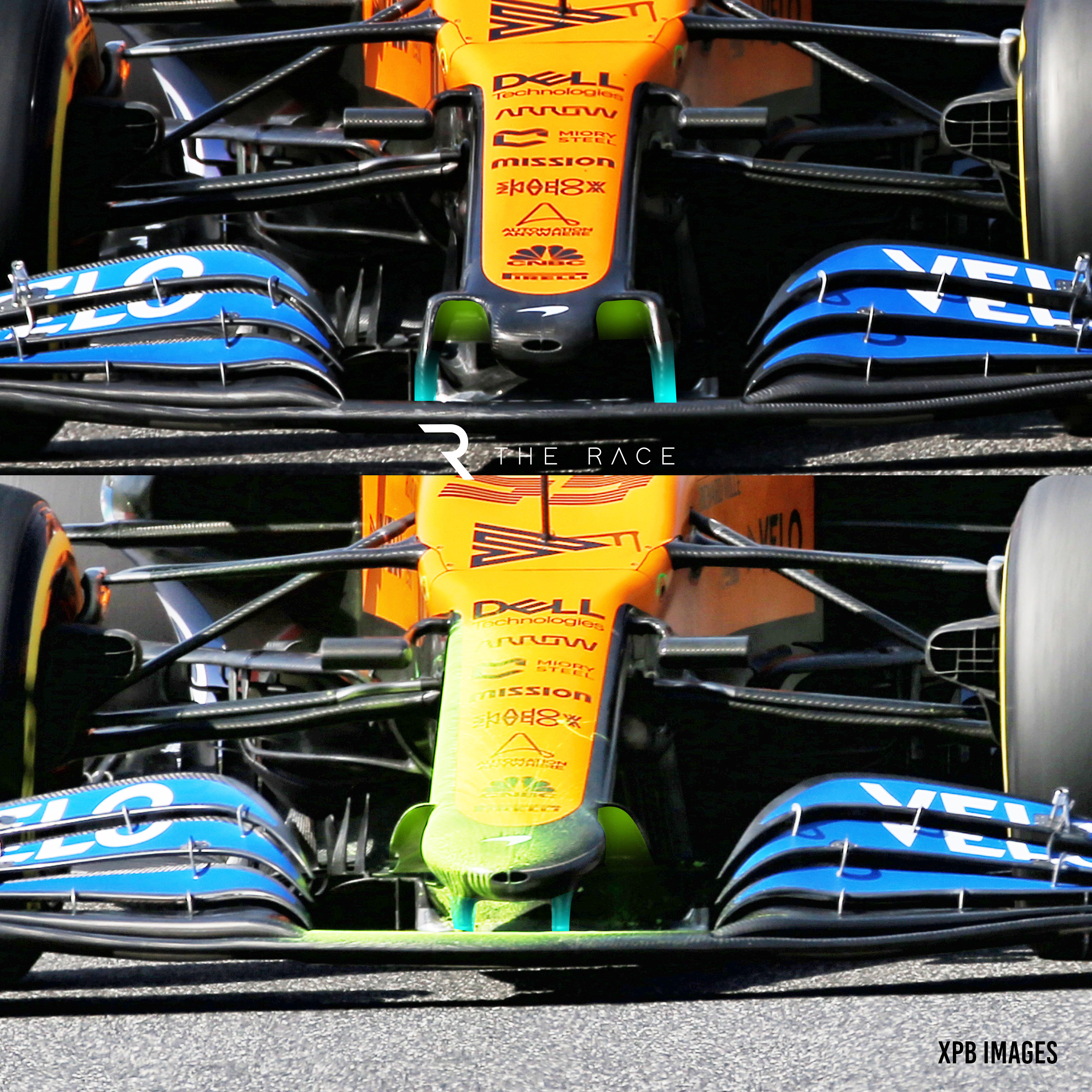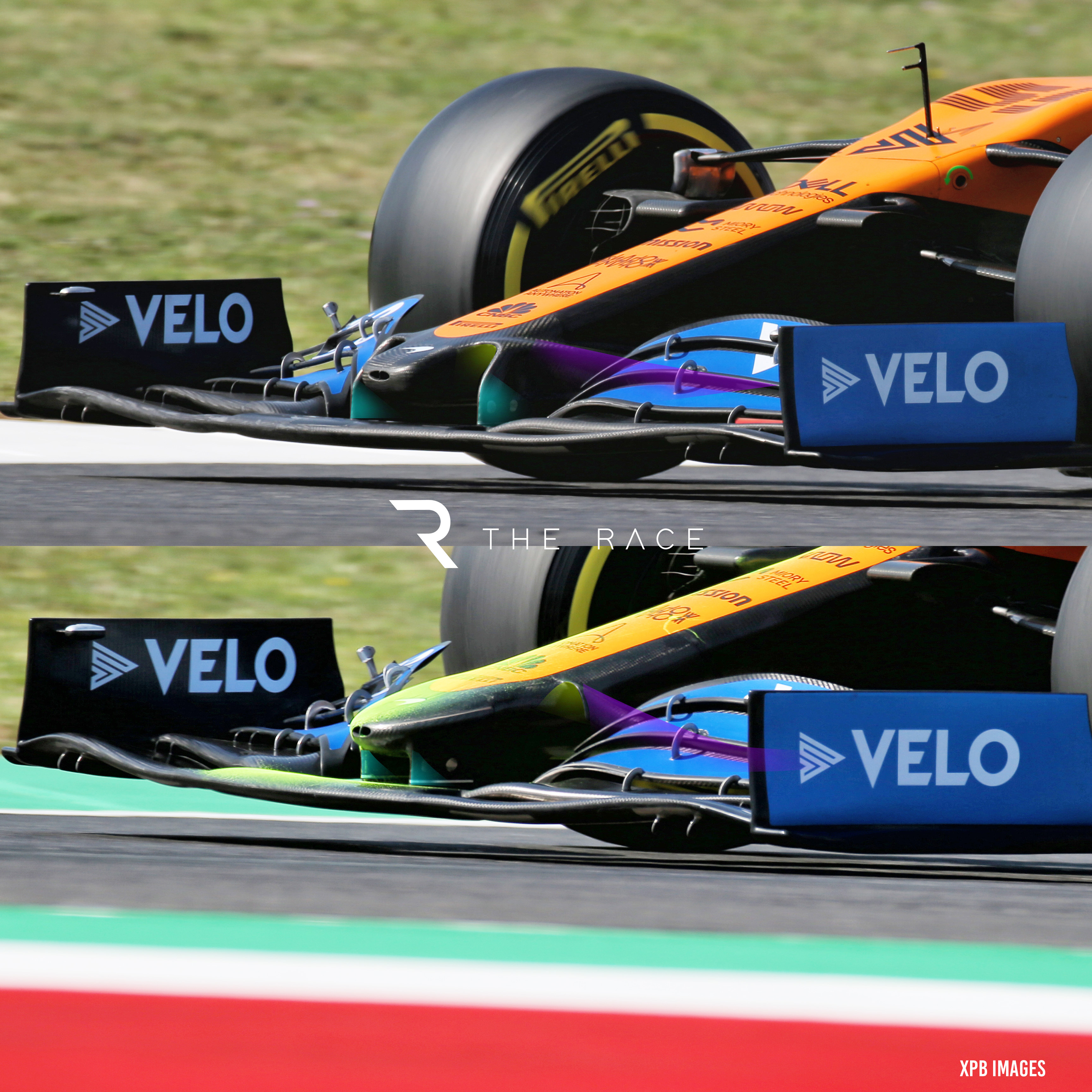Up Next

McLaren tested a new narrow-pillared front wing assembly during the first free practice session at Mugello on Carlos Sainz Jr’s car.
This was just a test component that had apparently shown promise in the windtunnel and needs further refinement before it’s used in competition, but given McLaren went to the effort of crash-testing it so it could run at Mugello it’s obviously a direction the team believes will pay off.

We used to hear a lot about the Y250 vortices – named to reflect the fact they are created at the transition from the FIA-mandated neutral central section of the front wing that stretches 125mm from the centre line on each side – but these have become less important now.
The main direction of development is in optimising the performance of the under-nose cape pioneered by Mercedes in 2017, and most teams now have a version of this.
McLaren had a cape, but also had wide wing mounting pillars. This is good for the wing stiffness but it affects the entry of the cape section and the pillar profiles are also quite close to the inner ends of the front flaps.

Being this close means they can interfere with airflow coming off the drooped inner ends of these flaps. You need this flow to be as strong as possible to help pull more airflow inside the front tyre.
You can see on the Mercedes and Racing Point they are working this area of the flaps as hard as possible with an extra very short slot gap to keep the airflow attached. McLaren doesn’t have that yet, but I’m sure something will be in the pipeline.

Improving the airflow under this cape section influences the performance of the bargeboards and underfloor, which in turn means that the car will produce more underbody downforce.
McLaren team principal Andreas Seidl said this morning that the nose would be seen in action properly in the next “two or three races” if today’s test proved to be successful and it correlated with the windtunnel and CFD work.




